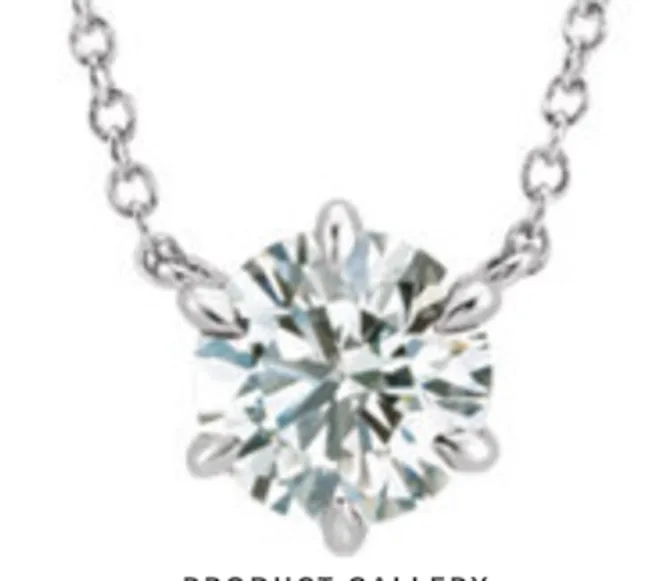Diamond Solitaire Pendant - A Buying Guide! | Rare Carat
“Diamonds speak louder than words''. And what better way than having a diamond pendant which is an absolute jewelry staple for any wardrobe. One can dress it up or down, just wear it with any attire and you probably won’t ever go wrong!
Here’s a guide below to help you choose the right one.
What is a diamond solitaire pendant?
A diamond solitiare pendant is essentially a solitaire pendant with a diamond as its main stone. It hangs from a chain that one wears around the neck.
Choosing that perfect diamond:
To begin with, choosing that perfect diamond is the first step.
We can start by selecting that diamond shape (outer structure or outline of the diamond) which will also have an influence on its setting style. The shapes you can select from include: round, oval, cushion, pear, heart, marquise, asscher, emerald, princess and radiant.
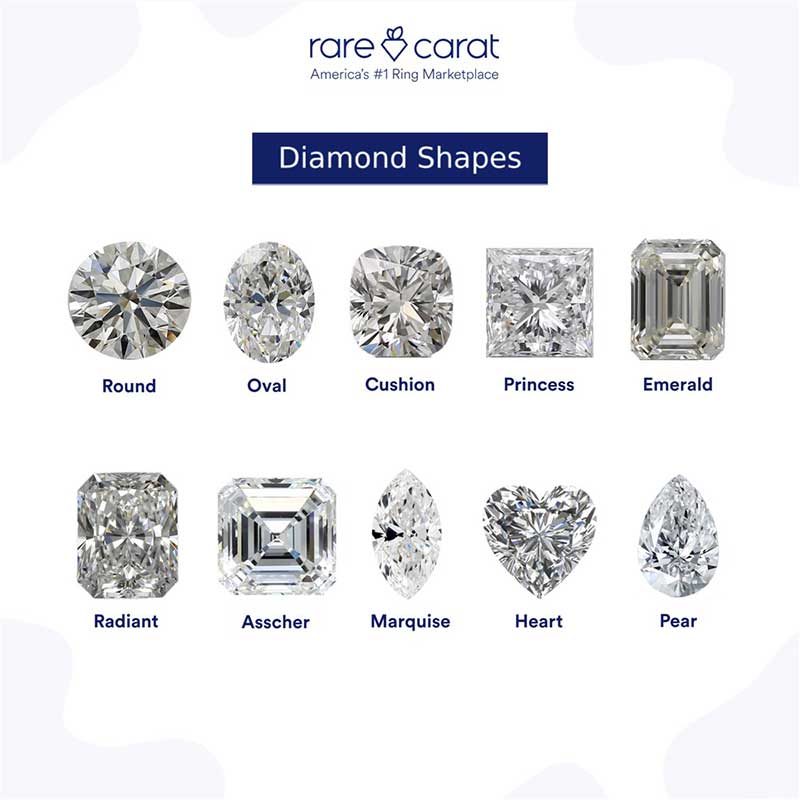
Once you’ve selected the shape, assessing the quality of the diamond is important. Quality here indicates knowledge of the 4C’s (cut, color, clarity, and carat) which will help you make a well-informed and better choice. Let’s delve a little more in detail what are the 4c’s:
Cut:
Cut means how well a diamond is cut and should not be confused with its shape. This is the most important C amongst the 4C’s because, if a diamond is cut well, its facets are able to reflect and refract light optimally giving it a ton of sparkle, brilliance and shine (all qualities we like to see in diamonds).
Clarity:
Clarity refers to the absence of inclusions and blemishes in a diamond. In other words, the better the clarity, the fewer imperfections. GIA (Gemological Institute of America) clarity grading scale is a great guide to help you choose which clarity would be best for your diamond/solitaire.
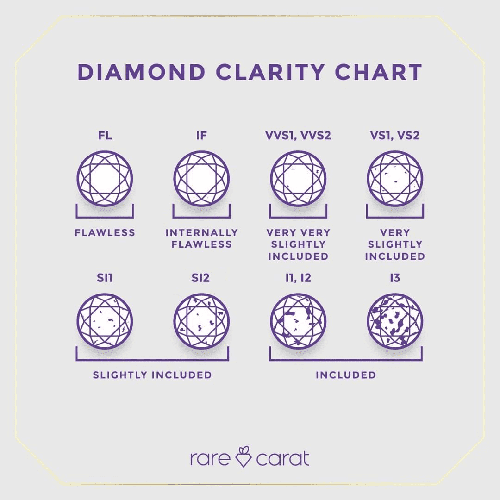
Color:
Refers to the absence of color in a gem quality diamond, for which GIA follows a grading scale from D-Z (colorless-light color).
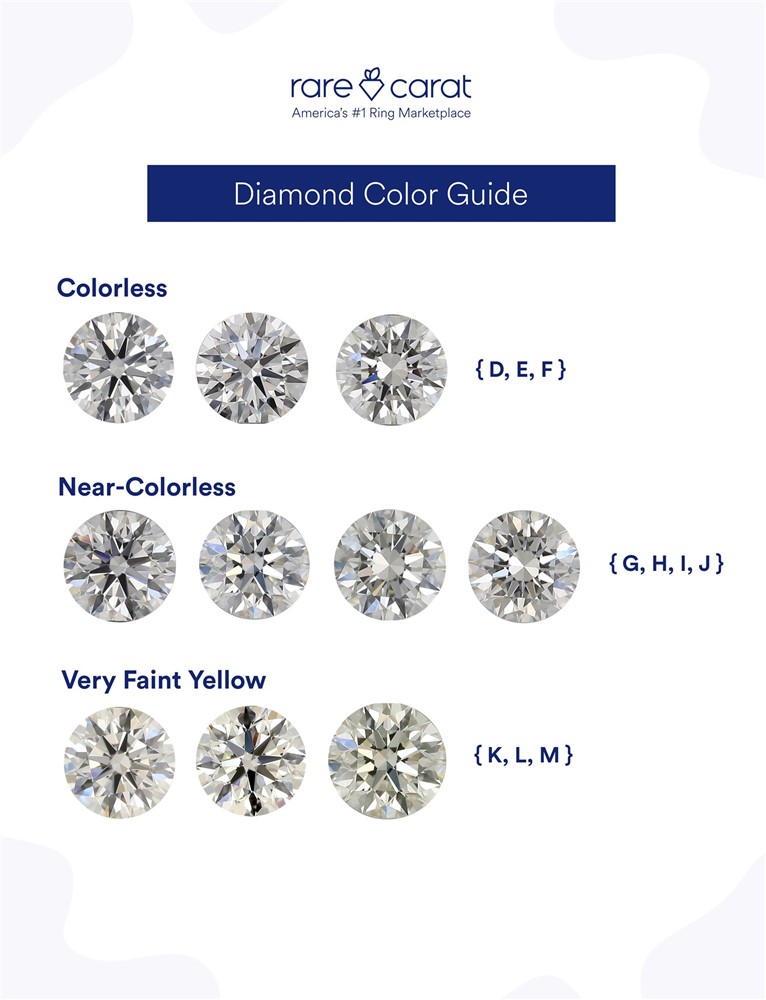
Carat:
The carat indicates the weight of a diamond and not its face up mm size. While the diamonds’ carat total weight is important, its size matters the most. So, the larger the diamond, the more expensive it is, depending on the other quality parameters too.
Best metals and metal color:

The next step is selecting the metal type and color which will enhance the look of the diamond/solitaire pendant. The color of the metal is reflected by the diamond it is set in. For example, for diamonds between the color grade range of D-J, white metal will be a great choice as the color of the metal will enhance the diamond’s colorless quality.
- Platinum: Very durable but amongst the most expensive metal.
- Yellow gold: A very sought after option for settings in jewelry.
- White gold: Alloy of yellow gold and some white metals. Will give a contemporary look to your pendant.
- Rose gold (pink gold): It is a blend of yellow gold and copper, giving a pinkish hue and romantic look to your pendant.
Setting Style:
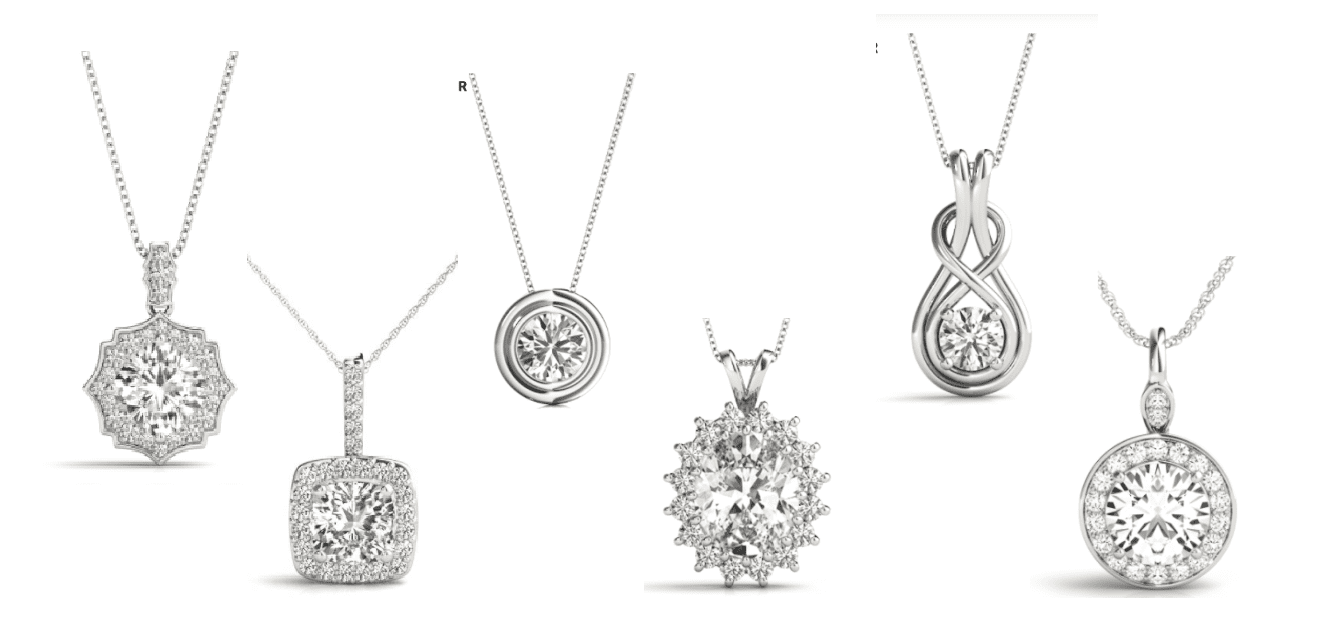
The beauty of a diamond/solitaire is further enhanced with the way it is set, also known as its setting style.
- Prong setting: The diamond is set in four, six or eight prongs with a minimum amount of metal. It is a perfect setting to bring out the beauty of the diamond.
- Bezel setting: The edge of the diamond is partially or fully surrounded by a thin metal mounting, making it one of the most secure and protected types of setting perfect for everyday use.
- Halo setting: A setting style where small diamonds are placed around the center diamond in a pendant. The best part about this type of setting is that it makes your center diamond look bigger than it is, adding more sparkle too.
- Channel setting: Small diamonds are placed between two walls of the metal in this setting style, making it a secure option for smaller diamonds.
Type of Chain and It’s length:
The next step would be to talk about a chain for your beautiful diamond solitaire pendant to hang from. Options for the chain most popularly used for diamond/solitaire pendants are:
- Box Chain: Made of square links - they are sturdy and don’t break easily.
- Cable chain: Probably the most common chain style, it's made from oval links that come in many different lengths.
- Wheat/Spiga chain: Twisted oval links that are plated together in one direction creating a delicate and symmetrical chain. This chain looks similar to the tips of wheat stalk hence this name Spiga/wheat.
- Figaro chain: A chain design consisting of two or three circular links followed by one elongated oval link.
- Curb chain: This chain looks similar to a cable chain that has been twisted and flattened, making all the links lie flat.
Length of the chain:
There are various lengths of chain for your pendant ranging from 16 inches to 36 inches, and more. The most common length is 18 inches because this length is likely to sit at the sweet spot that is below the neck and generally above the neckline where your diamond/solitaire pendant can be viewed comfortably.
Where to Buy The Perfect Diamond Pendant?
Most of our retailers offer diamond pendants! Once you choose your diamond, you can click the 'add to pendant' button on the dropdown box from any diamond page. If you don't find what you like, chat with a gemologist to see if there are other options or to discuss a custom design.
